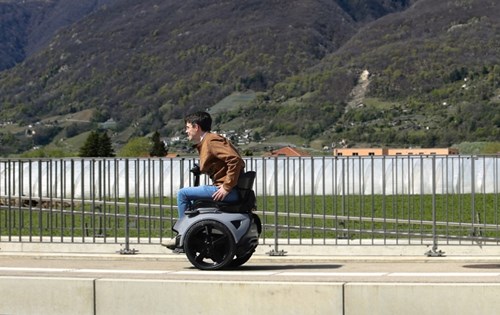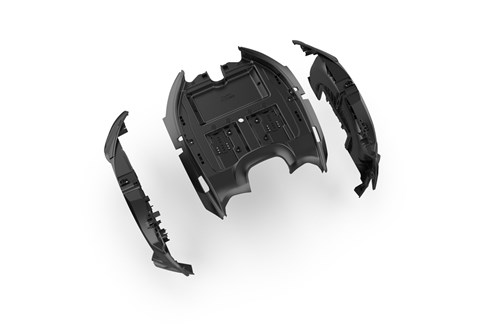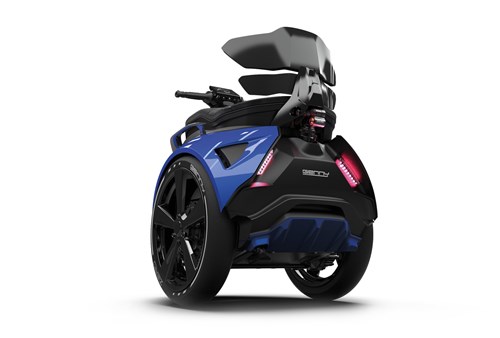Cutting-edge design, advanced technology and a strong commitment to sustainability: Genny Zero makes micromobility electric and inclusive.

RadiciGroup, Acerbis and Genny Factory SA have proudly announced their collaboration on the creation of a self-balancing personal transporter, a two-wheeled electric vehicle designed to redefine mobility standards from the medical sector to urban micromobility. Thanks to the teamwork among the three companies, this new vehicle combines aesthetics, functionality and accessibility to meet the growing demand for innovative sustainable mobility solutions.
For years, Genny Factory SA has been committed to improving the quality of life of people with reduced mobility. With this new product, Genny Zero, the company aims to launch a new era of electric mobility by offering an innovative, inclusive and sustainable solution.
“Currently, over 20 million wheelchairs are produced worldwide every year,” Paolo Badano, CEO of Genny Factory SA, pointed out. “By introducing Genny Zero, we intend to revolutionize this market with a product that merges cutting-edge design and pioneering technology, thus redefining the standards of the sector. Inspired by the concept of a self-balancing mobility vehicle driven standing up, we created a product that surpasses conventional limits, making the technology accessible to people with reduced mobility. We recently presented Genny Zero at the 2024 Olympic and Paralympic Games in Paris, where it stirred up the enthusiasm and curiosity of a vast and diverse public. The product is a state-of-the-art solution for increasingly more sustainable urban mobility.”
Genny Factory SA, headquartered in Ticino, Switzerland, chose to use an all-Italian supply chain and worked together with RadiciGroup and Acerbis on fine-tuning numerous structural and aesthetic parts of the vehicle.

Besides supplying high performance polymers, RadiciGroup supported all the design work through its Engineering Service – an inhouse service that uses advanced numerical simulation systems to aid in predicting component behaviour and optimizing the design even during the first stages of development. The objective was to replace the metal parts of the first Genny Zero prototypes with the appropriate materials to make them lighter, while ensuring the resistance, safety and aesthetic characteristics required by the application. More specifically, RadiciGroup High Performance Polymers brought into play different materials, such as Radistrong and Radilon for structural and functional parts and Radilon Mixloy for those parts requiring good aesthetic appearance.
“Using our engineering polymers contributed to reducing Genny Zero’s weight from 110 kg at the start to only 60 kg now,” Claudio Ghilardi, Marketing sector focal team leader, of RadiciGroup High Performance Polymers, said. “What’s more, the polymers helped make the vehicle dynamic, stable, safe and resistant to the various types of stress it was subjected to. Great attention was also given to aesthetic appearance, particularly to the fairings and rear, for which we chose materials that guarantee excellent surface appearance, hence avoiding the need for final painting. Additionally, the materials were stabilized against UV rays and developed to resist exposure to weather conditions.”

RadiciGroup worked closely with Acerbis through all the stages of the industrialization process, developing specific solutions to carry out the ambitious Genny Zero metal replacement project: from material formulation to mould design, injection moulding and usage testing of the various components. The fast all-Italian supply chain contributed to implementing a technologically advanced solution with an innovative design.
“Participating in this partnership to develop such a high-tech product that looks ahead to the future has made us proud,” Guido Acerbis, CEO of Acerbis, emphasized. “It has been an opportunity for us to open up new markets, such as micromobility and sustainability. Although the design challenge was ambitious, we managed to combine functionality and mechanical performance with innovative materials and a design that is dynamic and modern for our sector. Developing this project with companies in our community that, like us, have the curiosity to explore new worlds and the will to take our shared excellence to the international level makes us even prouder of our achievement.”
Press release

 Cookie policy
Cookie policy